
Franschhoek’s on track
120 000 visitors in a year.
That’s the figure the Franschhoek Wine Tram is expected to convey in the 2017/2018 tourist season, according to Brett Garner, general manager of the Franschhoek Wine Tram.
Garner mentioned this tally while speaking to the media at the launch of the new double-decker rail tram which runs from the Groot Drakenstein station near Boschendal and Allée Bleue to Vrede en Lust on the Simondium road, taking visitors to wine farms like Glen Carlou and Noble Hill further up the road.
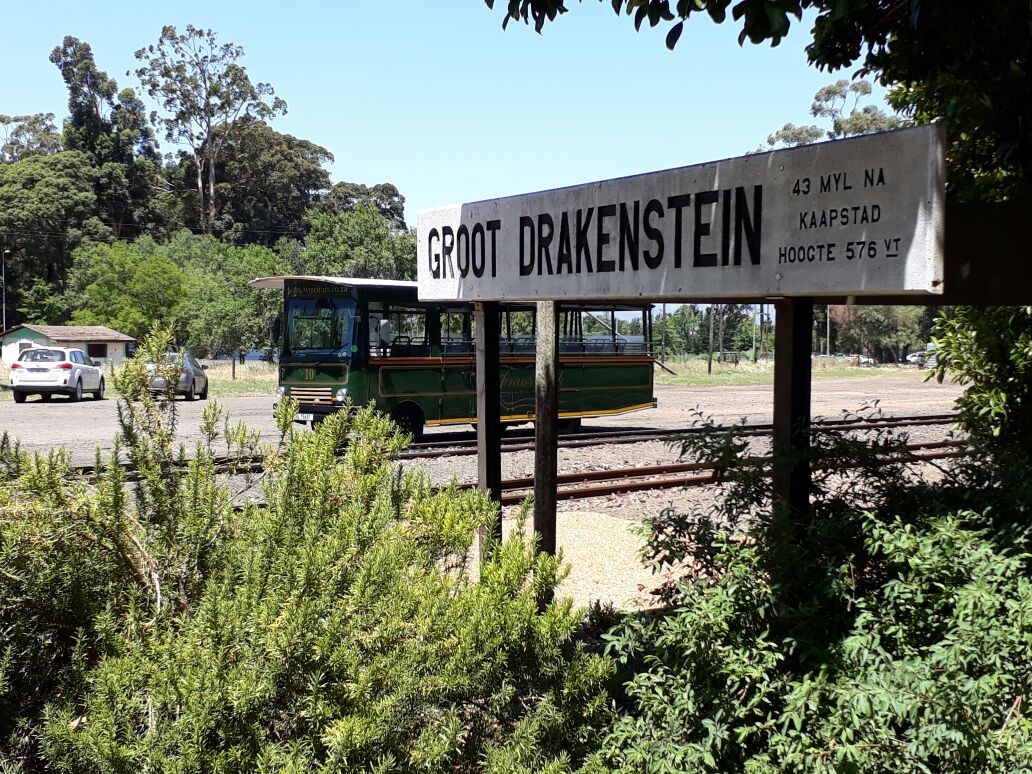
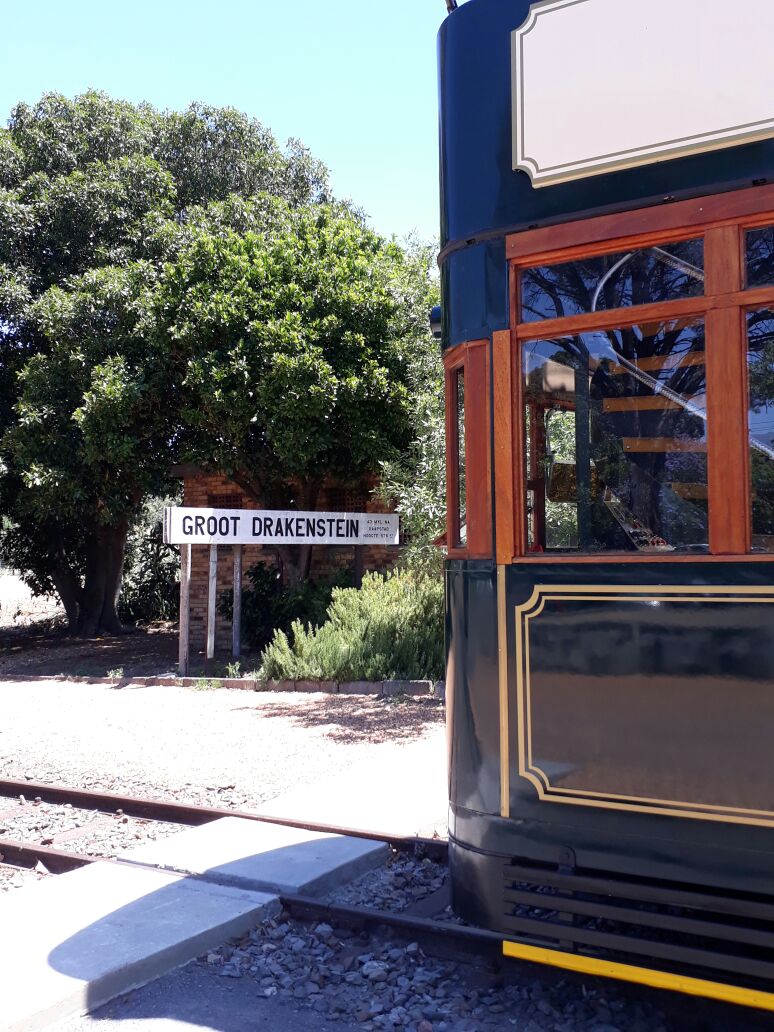
On a swelteringly hot day in early December last year, Alan Winde, the Minister of Economic Opportunities for the Western Cape cut the ceremonial ribbon and officially launched the double-decker Franschhoek Wine Tram’s Drakenstein/Simondium route which incorporates Plaisir de Merle.
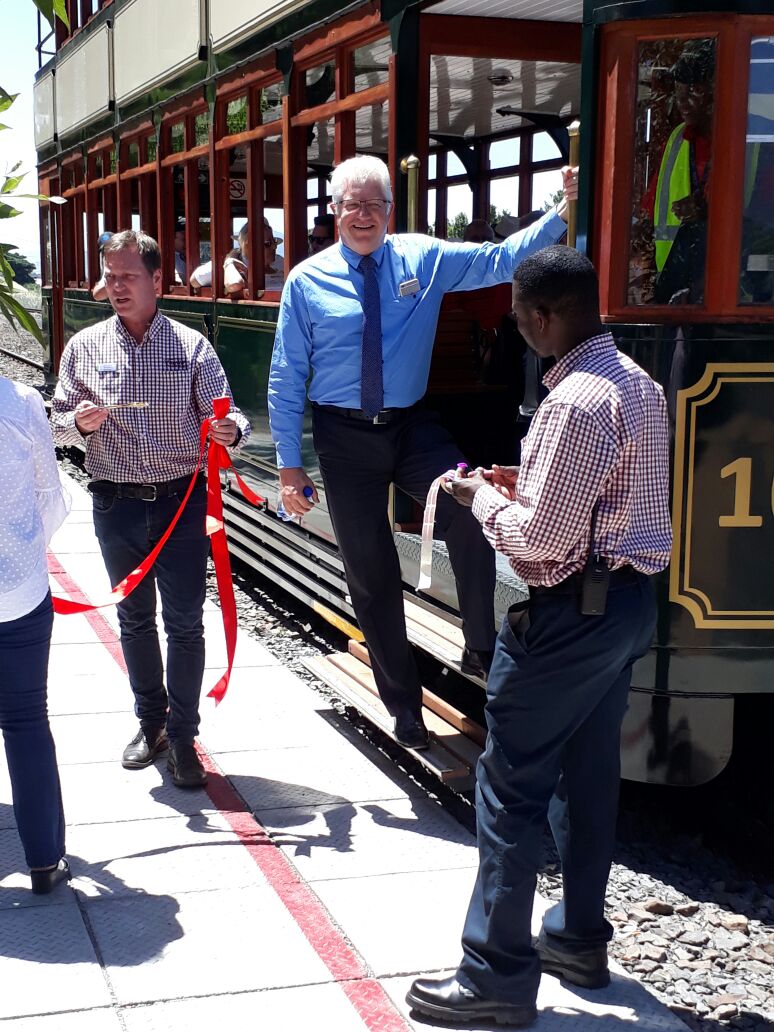
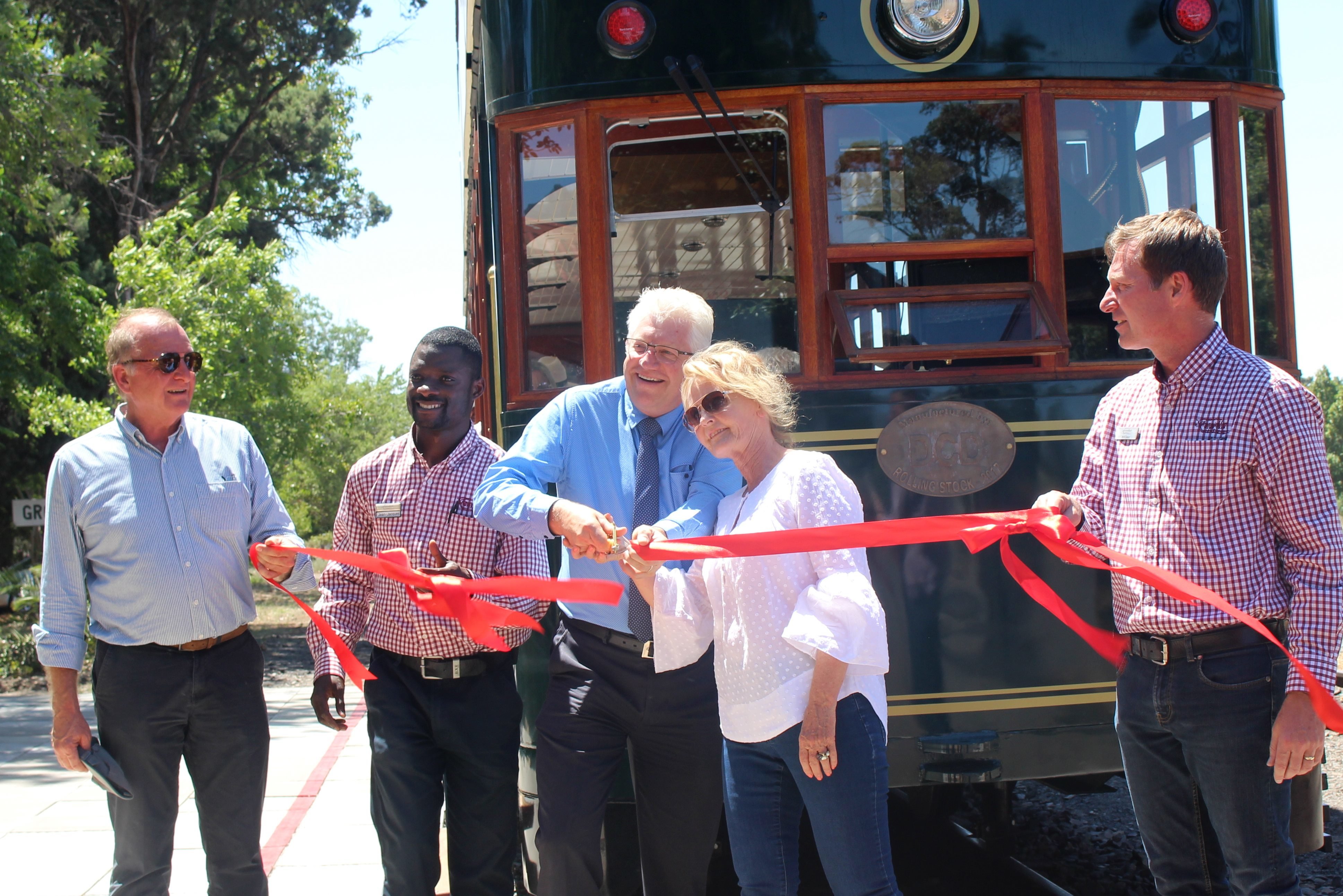
Western Cape Economic Affairs Minister Alan Winde ceremonially cuts through the red tape to launch the Franschhoek Wine Tram’s newest route to Simondium from groot Drakenstein.
Winde said tourism in the Western Cape was growing at 27% year-on-year and cited the example of the Franschhoek Wine Tram, along with the multitude of vinous gems and scenic charms as contributing factors for this growth. Initiatives such as this have an extremely positive economic impact – directly and indirectly – on the entire region.
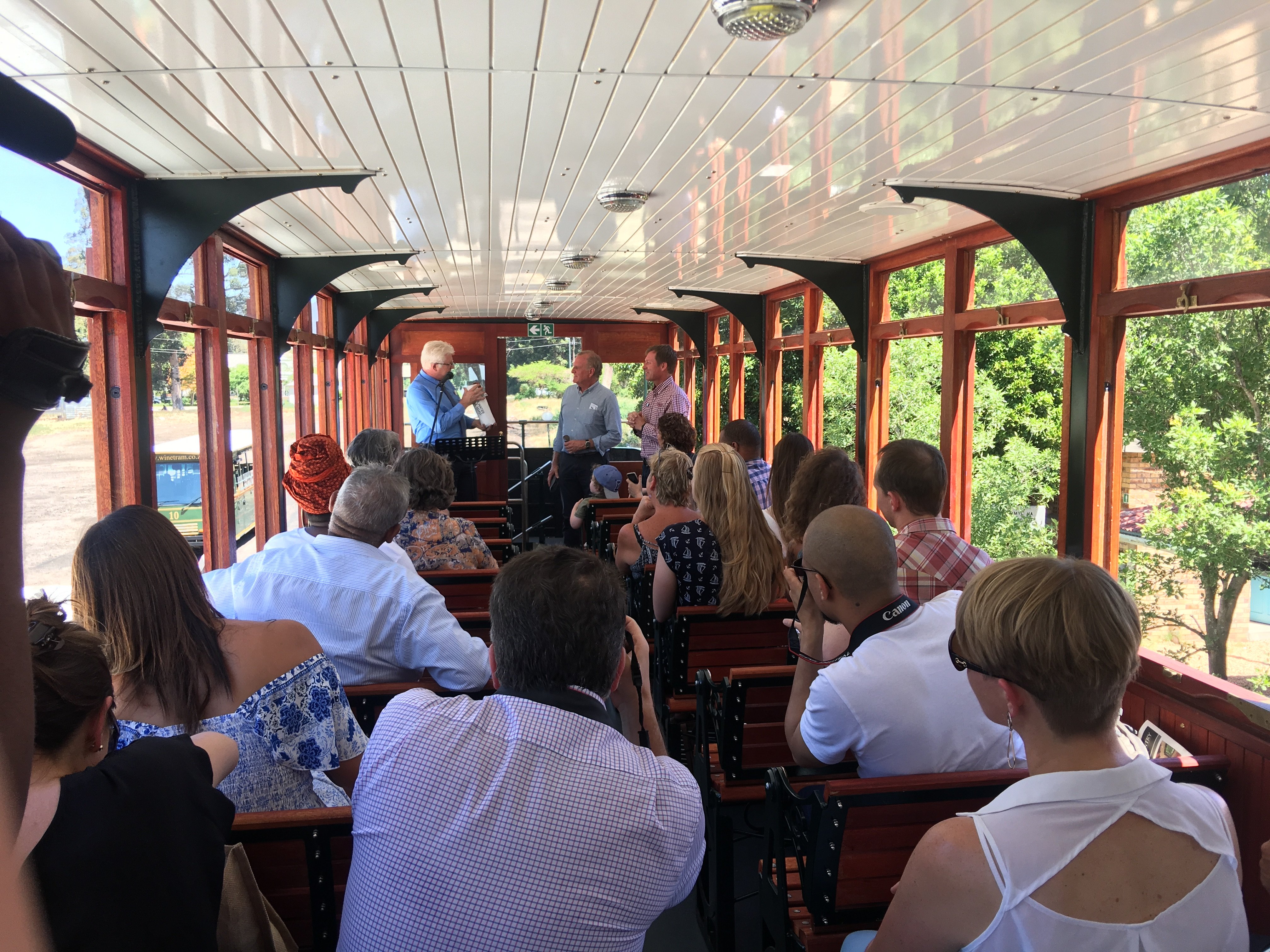
While there were many nay-sayers predicting doom and economic ruin to David and Debbie Blyth six years ago when they launched the Franschhoek Wine Tram, it has been an instant hit with the punters. Garner reports that it has gone from a single 32-seater open-sided vehicle visiting two wine farms to six different routes covered either by trams on rails or wheeled trolley buses which do transhipment of guests to specific wine farm tasting rooms – 22 in all, now covering the entire Franschhoek wine route.
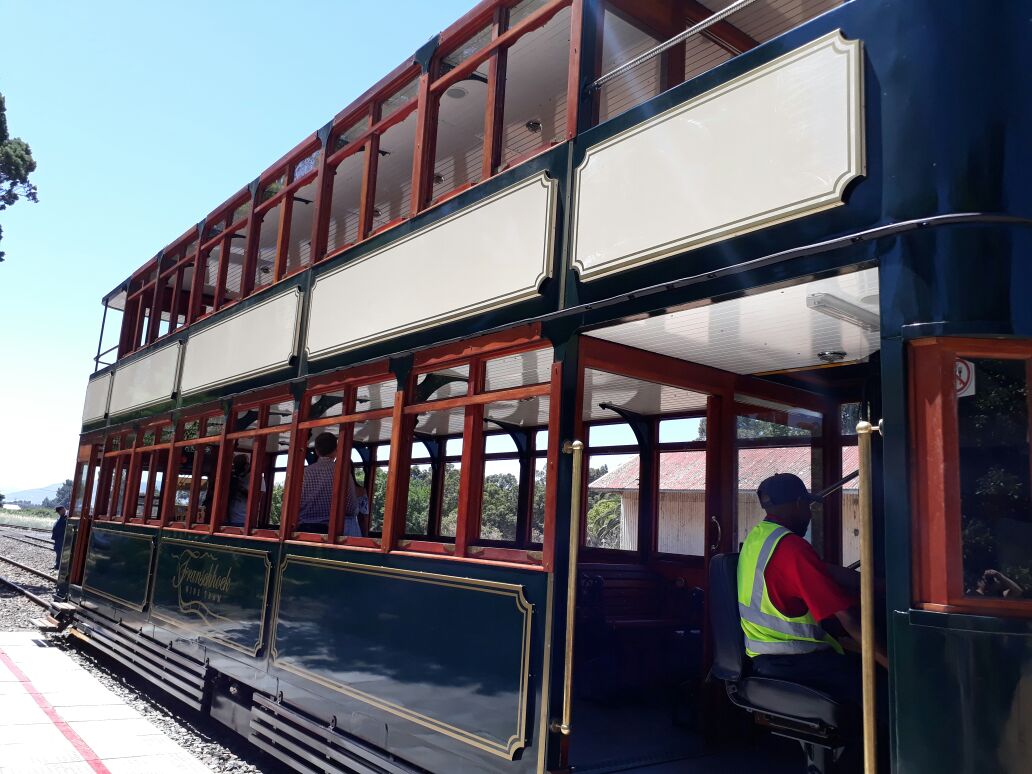
In the South African wine fraternity there appear to be two regional wine bodies setting the pace: Franschhoek and Robertson.
It was unheard of in 1971 when Stellenbosch wine farmers, the late Frans Malan of Simonsig, Spatz Sperling of Delheim and Neil Joubert of Spier established South Africa’s first wine route. It remains the biggest and arguably the most significant. Now, nearly 50 years later the various wine routes are well established, supplying local and foreign visitors with maps detailing routes, restaurant and accommodation options, hours of opening and the various attractions of its members.
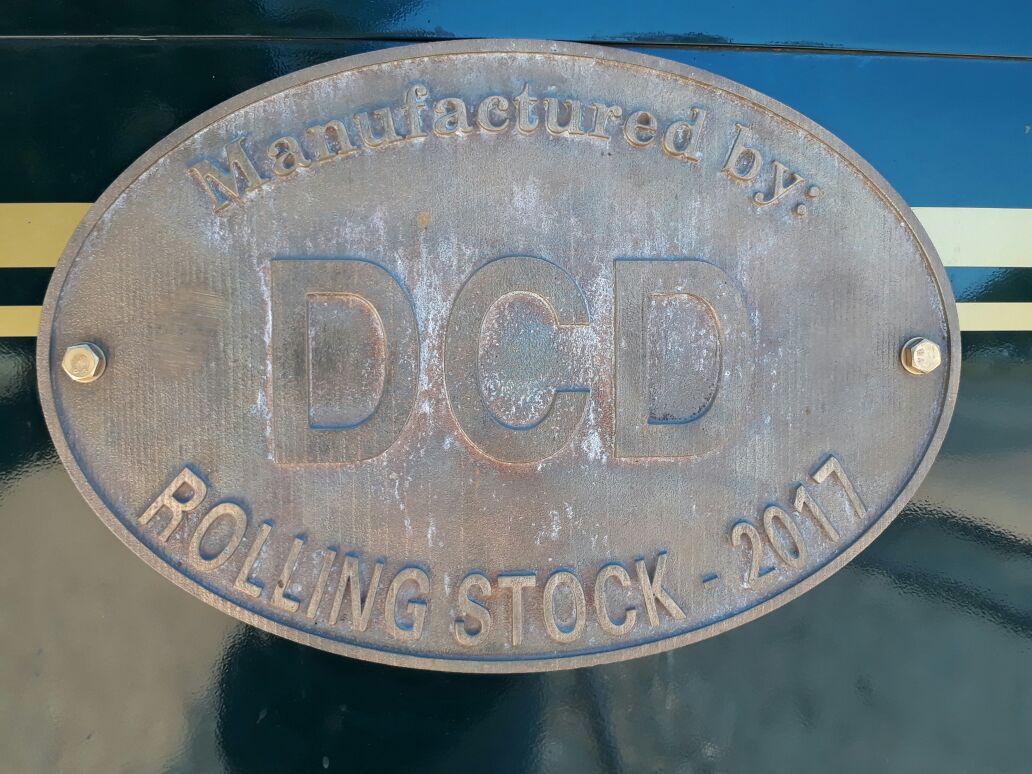
Already on the social calendar and a fixture in many a wine enthusiast’s diary is the Wacky Wine weekend in Robertson (31 May to 3 June this year FYI). Begun in 2004, it has grown to include nearly 50 wine farms in the greater Robertson area and has had a significant economic impact on the local economy. According to a survey conducted by Stellenbosch University’s Bureau for Economic Research in 2010, R29.9 million was pumped into the local economy directly as a result of this one wine festival. Consequently, other seasonal events were spawned – Hands On Harvest (February), SLOW (August) and Wine on the River (October) to mention just three.
Franschhoek has adopted a similar approach – and arguably has an easier time of it due mainly to its proximity to Cape Town and it being a ‘must visit’ on tourist itineraries. Regardless of whether it had a single festival, the region’s bucolic charm, profusion of restaurants and historic French heritage would guarantee tourist numbers. But Franschhoek boasts a vibrant organisation which has skilfully linked the interests of guest house owners, restaurants and wine farms. All benefit from not just festival goers who visit for the annual Champagne & sparkling wine event in December or the Bastille celebrations in July, for example, but from a steady stream of local and foreign visitors who make the journey out to the town urged to do so by Trip Advisor ratings, travel blogs, web sites and old fashioned guide books.
So little wonder why guests, staying in the town who might not have transport, flock to the Wine Tram on a daily basis, paying R220 to visit up to six wineries in order to taste the local wines and soak up the scenery and the atmosphere.
It’s a winner – but it’s also benefitting the local economy to the tune of millions!
-Fiona McDonald
